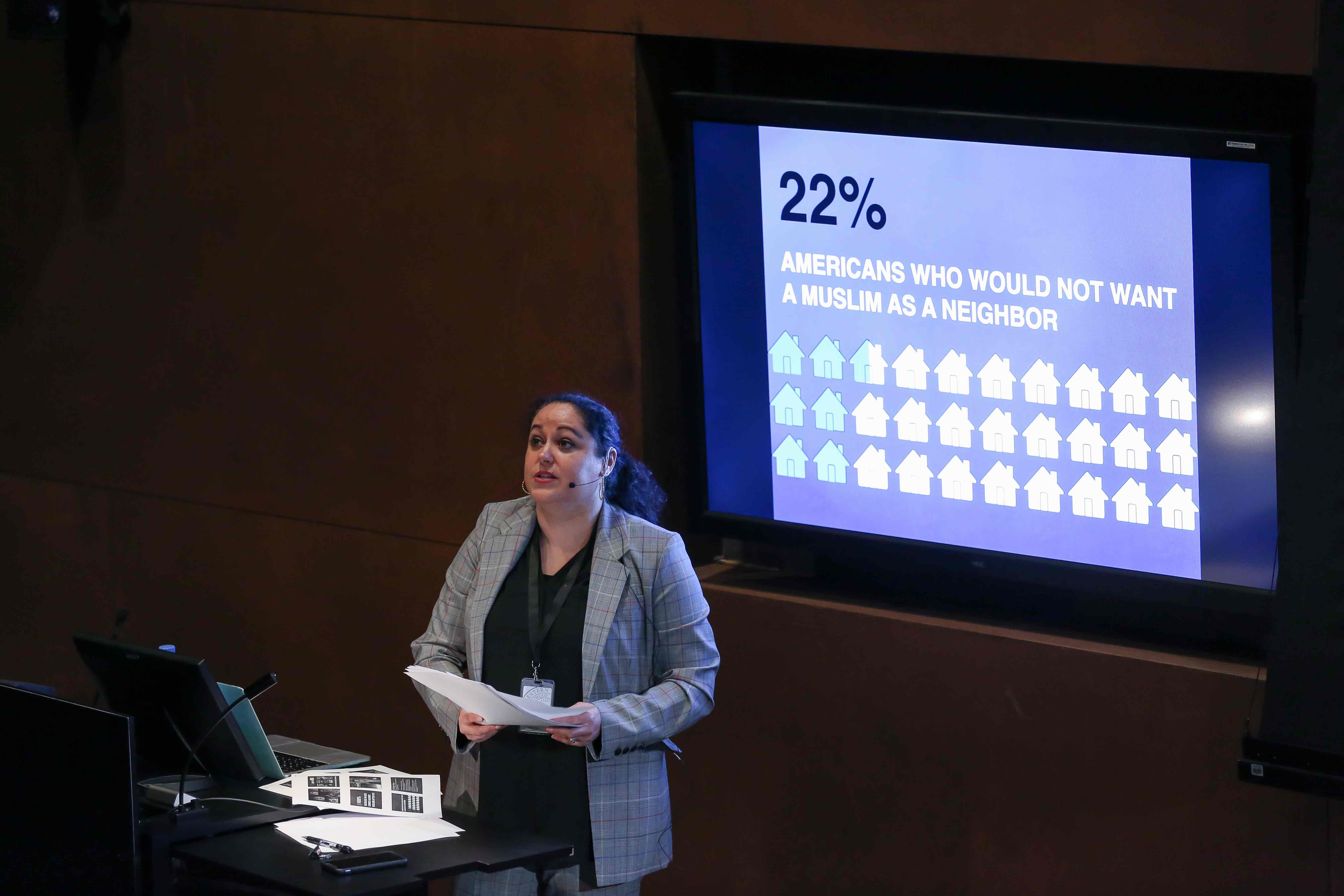Expert on How Arabs and Muslims Are Portrayed in U.S. Media Speaks at NU-Q
The portrayal of Arabs and Muslims in the U.S. media has resulted in a negative perception and triggered an increase in an anti-Arab and anti-Muslim sentiment in that country. That is according to Evelyn Alsultany, a scholar on the history of representations of Arabs and Muslims in the U.S. media and on the different forms of anti-Arab and anti-Muslim discrimination.
Alsultany spoke at NU-Q and discussed her latest research on the depiction of Muslims and Arabs in U.S. media – specifically in films and TV shows.
Throughout her talk, Alsultany mapped the different ways in which Arabs and Muslims have been represented over time, ranging from “barbarians, to belly dancers and rich
“Professor Alsultany’s research addresses the Arab and Muslim cultural and political identity as it is represented in mainstream U.S. media,” said Everette E. Dennis, dean
In her book, Arabs and Muslims in the Media: Race and Representation after 9/11 (2012), Alsultany examines a trend that emerged after the 9/11 terror attacks, when there was a proliferation of sympathetic portrayals of Arabs and Muslims in the U.S. media. In describing it as “a paradox,” she pointed out that while there was an increase in the incidence of hate crimes and government policies that targeted Arabs and Muslims, there was also portrayals that created “sympathetic images of ‘the enemy.’”
“Alsultany’s work challenges media producers and academics alike to push beyond the half-hearted multicultural gestures that invoke the humanity of the other while reinstating values that further marginalize those outside the privileged culture.”
“Since policy, film, government, and social discourses intersect with each other, a multi-cultural movement in the 1990s that involves balancing a negative representation with a positive one, meant that storylines that include a negative representation of an Arab or Muslim were offset with a more positive one,” she said.
Meanwhile, on the significance of media representations in contributing to the status quo, Alsultany said
Alsultany’s talk, which was hosted by the Middle East Studies (MES) minor, was moderated by NU-Q Professor and Chair of the MES committee Zachary Wright, who said, “Alsultany’s work challenges media producers and academics alike to push beyond the half-hearted multicultural gestures that invoke the humanity of the other while reinstating values that further marginalize those outside the privileged culture.”
Alsultany is an associate professor in the Department of American Studies and Ethnicity at the University of Southern California. Prior to assuming her current position, she taught at the University of Michigan where she co-founded and directed the Arab and Muslim American Studies program. Alsultany is a co-founder of the Islamophobia Working Group, dedicated to the creation of a more inclusive campus environment for students impacted by Islamophobic racism. She is also the author of Arab and Arab American Feminisms: Gender, Violence

